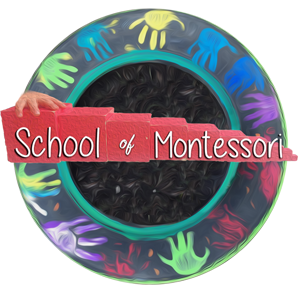- Start with the large green square and teach the names of the parts that make up the total figure.
- “This is a _______ square.” Separate the triangles that make up the square and say: “This square is made up of two very special triangles called right angled isosceles triangles. Can you say _______?”
- Show the child that the large yellow parallelogram is also made up of two right-angled isosceles triangles.
- Present the two small parallelograms and the grey rectangle. They are all made up of two right-angled scalene triangles.
- Do a three period lesson with the right angled isosceles triangle and the right angled scalene triangle. Be sure the child knows that an isosceles is a triangle of two equal sides and the scalene is a triangle with each side of different length.
- Continue to present in a three period lesson the remaining triangles until the child has learned all the names.
- Replace the triangles into the box in the following order:
- Large green square to the left bottom of the box.
- Small green parallelogram to the right of the square.
- Large yellow parallelogram to the left, on the second level.
- Small yellow oblique parallelogram to the right of the large yeallow parallelogram.
- Place the gray rectangle to the right of the box, third level.
- Place the red trapezoid on the top of the grey rectangle.
- Place the yellow rhombus to the left of the grey rectangle.
POINTS OF INTEREST
- Touching the black line.
- Matching the triangles.
- Indirect superimposing when triangles fit in the box.
- Naming the shapes and the various triangles used to make them.
CONTROL OF ERROR
- Black guidelines of triangles.
- Color of triangles.
DIRECT AIMS
- Show the various four sided forms constructed from two shapes.
- Development of ability to discriminate geometric forms.
- Growth in concentration and independence.
INDIRECT AIMS
- Preparation for Geometry.
- Development of appreciation of line and form.
- Development of creativity.
LANGUAGE
- Names of quadrilaterals and names of triangles.
